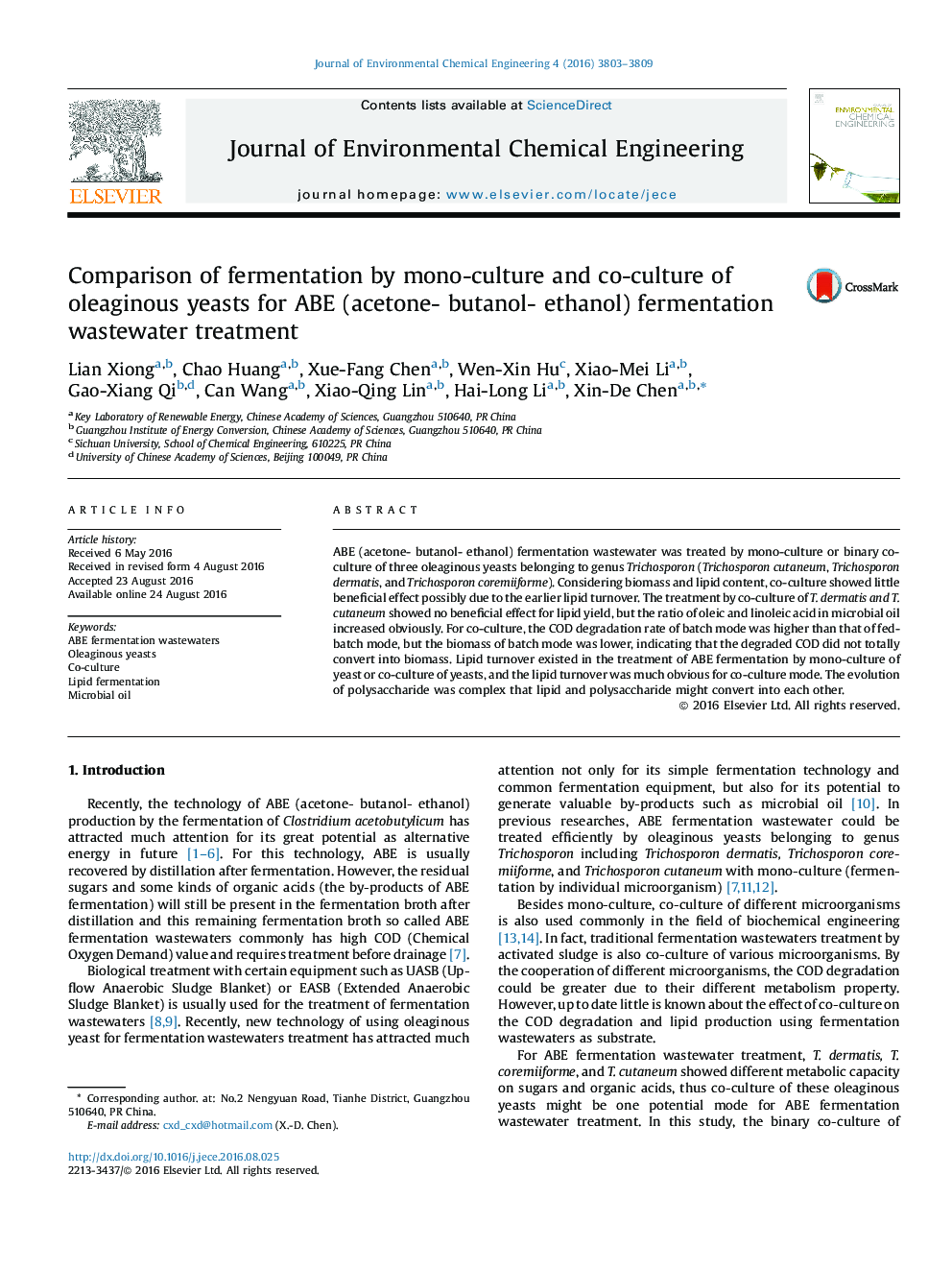| کد مقاله | کد نشریه | سال انتشار | مقاله انگلیسی | نسخه تمام متن |
|---|---|---|---|---|
| 4908558 | 1362581 | 2016 | 7 صفحه PDF | دانلود رایگان |
- ABE fermentation wastewater was used for lipid fermentation.
- Co-culture and mono-culture of oleaginous yeasts were carried out and compared.
- Effect of fermentation on cell growth and products accumulation was evaluated.
- Yeasts belong to genus Trichosporon were used for wastewater treatment.
ABE (acetone- butanol- ethanol) fermentation wastewater was treated by mono-culture or binary co-culture of three oleaginous yeasts belonging to genus Trichosporon (Trichosporon cutaneum, Trichosporon dermatis, and Trichosporon coremiiforme). Considering biomass and lipid content, co-culture showed little beneficial effect possibly due to the earlier lipid turnover. The treatment by co-culture of T. dermatis and T. cutaneum showed no beneficial effect for lipid yield, but the ratio of oleic and linoleic acid in microbial oil increased obviously. For co-culture, the COD degradation rate of batch mode was higher than that of fed-batch mode, but the biomass of batch mode was lower, indicating that the degraded COD did not totally convert into biomass. Lipid turnover existed in the treatment of ABE fermentation by mono-culture of yeast or co-culture of yeasts, and the lipid turnover was much obvious for co-culture mode. The evolution of polysaccharide was complex that lipid and polysaccharide might convert into each other.
Journal: Journal of Environmental Chemical Engineering - Volume 4, Issue 4, Part A, December 2016, Pages 3803-3809
